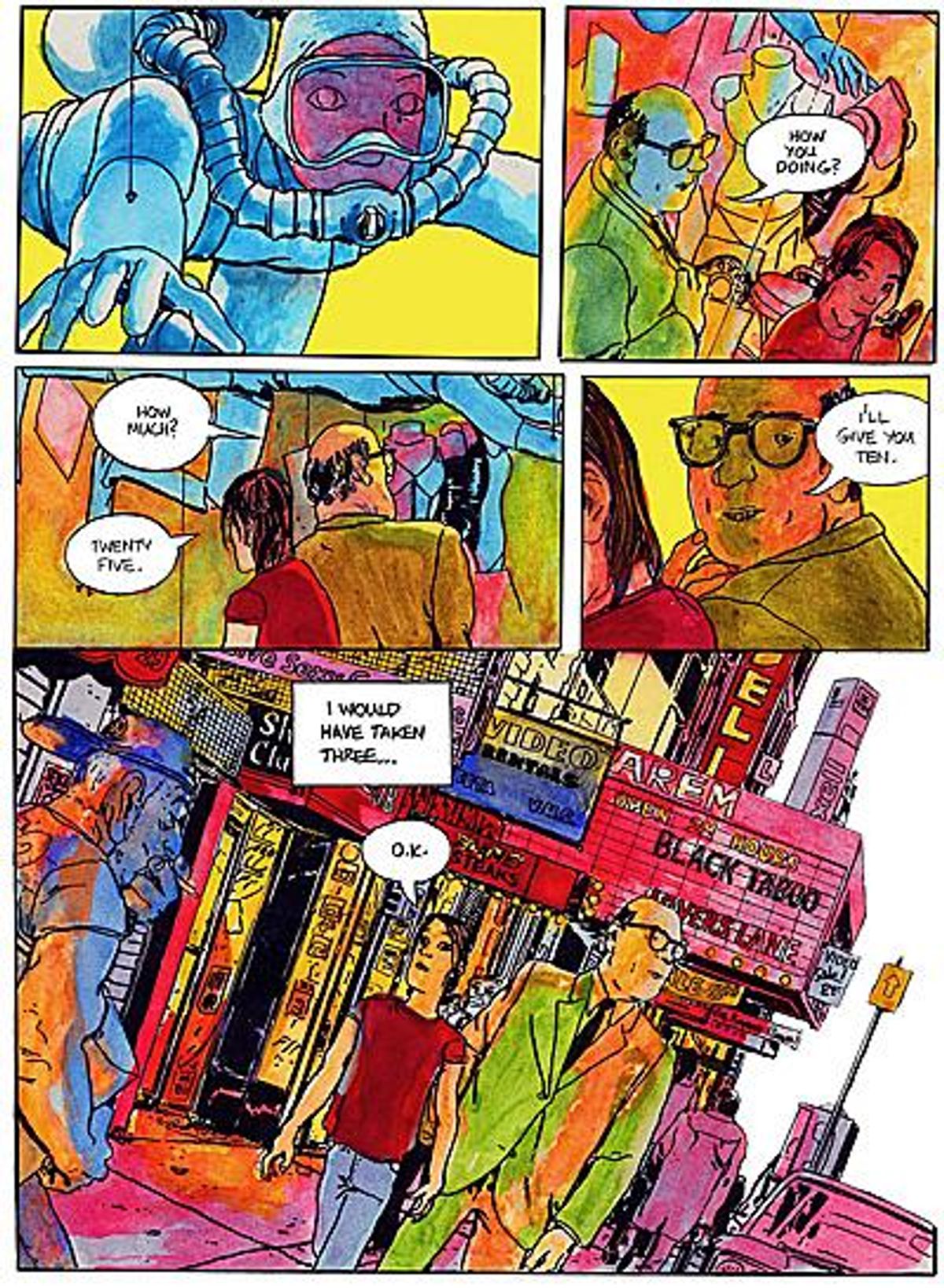The autobiographical graphic novel 7 Miles a Second was written by gay artist and AIDS activist David Wojnarowicz and illustrated by his friends James Romberger and Marguerite Van Cook, both artists still living with HIV. Originally released by DC Comics’ Vertigo imprint four years after Wojnarowicz's AIDS-related death in 1992, the book is being reissued by Fantagraphic, offering a glimpse at the famed artist's life to a whole new generation. Reading 7 Miles a Second is a little like opening a time capsule or being transported back to the 1980s and catching glimpses of Wojnarowicz’s life as he grew up on the streets of New York City, hustling to survive.
The illustrations in the graphic memoir take full advantage of the queer and artistic potential inherent in the comic book format, juxtapositioning different styles and mashing them together with other artistic genres (avant-garde, impressionist, watercolor), while pulling inspiration from diverse pop cultural sources like genre fiction and porn, horror, action, and monster movie — all of it presented in an over-saturated brew of neon and synthetic colors.
The book opens with a businessman taking a geeky and gaunt prepubescent Wojnarowicz to a hooker hotel where the man has the boy watch a hetero couple have sex through a peep hole while he gives Wojnarowicz a blow job.
“The first time I’d seen how men’s and women’s bodies interact,” Wojnarowic writes. “Having only had sex with older men since I was nine. It had me in awe of the taboo. Them unaware of us watching.”
Wojnarowic would later translate his awe of the taboo into a prolific outpouring of creative endeavors, dabbling in film, stencil, photography, and music. And he would play with perspective — watching others and putting himself on display as the one to watch — while also depicting the world as oblivious to his life and pending death. But before then, 7 Miles a Second depicts a teen Wojnarowic in a drug or hunger-induced delirium, stumbling through the streets of New York, desperately searching for food, shelter, and compassion, but finding only rejection, degradation, and horror. This is not a comic book for the kids.
7 Miles a Second captures a moment in time, forever memorializing not just Wojnarowicz life but the early days of the AIDS epidemic when having the disease was a death sentence and thousands were dying, but no one seemed to care—not politicians or medical professionals or religious leaders or everyday people—because it was seen as a "gay" problem. Perhaps even a solution to the gay problem.
It can be difficult to remember in 2013, just how despised gays were and just how oblivious the rest of society seemed to the AIDS epidemic in those dark days. In part we owe our privileged perspective to activists like Wojnarowicz who shared their personal experiences and forced the world to pay attention. But 7 Miles a Second captures the rage and impotence felt by thousands of young gay men who were suddenly faced with the brutal finality of death. In one stream-of-conscious rant (illustrated by a Godzilla-sized Wojnarowicz smashing a church), Wojnarowicz writes of trying to funnel his rage into non-violent resistance but finding it more and more difficult.
“There’s religious leaders and health care officials that had better get bigger fucking dogs and higher fucking fences,” he threatens in the book.
In real life, AIDS activists never became giants or unleashed widespread violence; and the haters never paid for their indifference. But the work of Wojnarowicz and thousands like him did eventually move individuals, institutions, and entire nations, to care.
In one of the book’s final narratives, Wojnarowicz writes, “I am a glass human disappearing in rain. I am standing among all of you waving invisible arms and hands. I am shouting my invisible words…I am disappearing.”
Wojnarowicz may have indeed disappeared. But he was never as invisible as he feared. And he lives on in 7 Miles a Second as well as in the dozens of artists already influenced by his work.

















































































